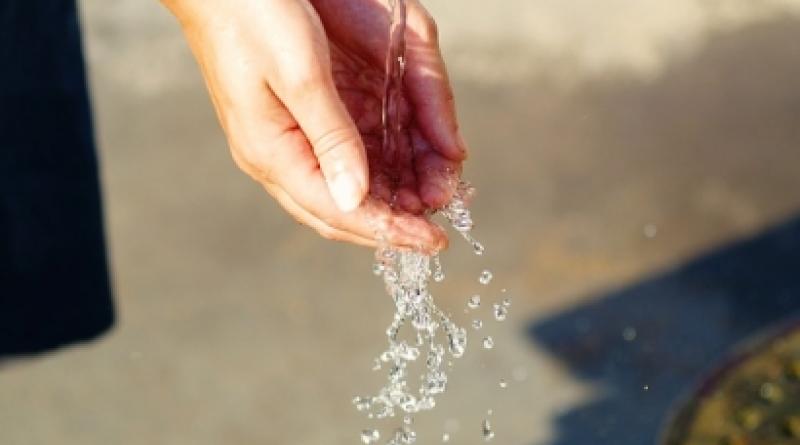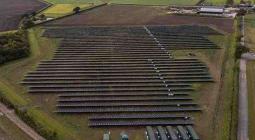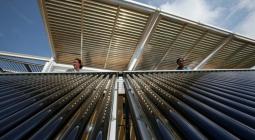Is There a Link Between Renewable Energy and Clean Water?

Stories about lead poisoning in the first world and water rights sold for a pittance to corporations are commonplace. As a result of that, more eyes than ever are trained on the earth’s water and more voices than ever are helping drive changes to safeguard it.
One of the choices we can begin making, today, is to double- and then triple-down on renewable energies. Making this change is necessary to protect earth’s future habitability. But it’s also important, right now, to the health of the water table that we — that is, everybody on earth — depend on every day.
Explaining the Link between Water and Energy
The act of producing energy that humans can use consumes water. Simultaneously, making fresh water available to drink or use in cooking and bathing consumes energy. We have to gather, treat and transport water before we can use it. Each of these steps is an energy-intensive process.
And for various reasons, the world’s supplies of both energy and water are not as stable as they should be. And that’s a touch embarrassing, given that we’re some 140 years removed from electricity going mainstream and thousands of years since primitive water filtration dawned on Hippocrates.
The heart of the problem here is that even some advanced economies like the U.S. haven’t done a very good job scaling their water and energy infrastructure to meet everybody’s needs without overtaxing our resources.
In fact, it’s not a stretch to say that shortsightedness in the “first world” and its refusal to use or share resources equitably are the reason the myth of scarcity exists in the first place.
As noted by the Union of Concerned Scientists, water is used in various stages of multiple power generation or energy extraction methods. These include:
- Water-based cooling systems in electricity-generating turbines
- Refining fuels intended for use in transportation
- Mining and related industries
- Extracting petroleum and other fracking and drilling activities
Even growing feedstock to make biofuels is a water-intensive process.
The question is, how can we bring our water and energy consumption back into balance without creating harsh disruptions to either resource? The demand for energy only increases across the globe. And climate change continues to create harsh paroxysms between drought conditions and the sudden onset of destructive storms.
Here are some ideas:
How Renewable Energy Drives a Cleaner Water Table
Again, remember one of the key points: that essentially all our sources of electricity today rely on water. With that in mind, here’s a rundown of some of the solutions we can begin applying, right now, to use both water and energy in a more efficient, fair and eco-conscious way:
Solution 1: Make buildings and automobiles more efficient.
The first step in bringing water and energy back into balance is to work harder on making our electric vehicles and all of our homes and commercial buildings more energy-efficient. If our collective demand for energy isn’t as high, we don’t have to use as much water generating it.
Solution 2: Invest more heavily in renewables.
The time has come to divest completely from fossil fuels and invest heavily in renewable energies. Unlike traditional power generation plants, renewable energy sources like solar and wind do not require the application of water.
Solution 3: Retrofit nuclear plants with more efficient cooling.
Nuclear power is controversial, but the technology has come a very long way and it could be a vital part of the world’s post-fossil-fuels energy portfolio. The Union of Concerned Scientists notes that retrofitting our nuclear plants with more energy-efficient cooling systems could “reduce water withdrawals by two orders of magnitude.”
Solution 4: Make water treatment facilities more efficient.
The electrical systems, including aeration, involved with treating wastewater and turning it into potable water again, are energy-intensive. These systems consume at least 25 percent and as much as 60 percent of a treatment facility’s energy budget. Applying renewable energy here would provide a huge savings in both energy and water.
It’s Time for Major Changes
Success is going to require a combination of each of these methods, and likely others as well. According to the World Health Organization, an incredible 30 percent of the human population — 2.1 billion individuals — lacks access to clean water.
It couldn’t be clearer that energy has an outsized appetite for water. Around 40 percent of the fresh water drawn from within U.S. borders is ultimately destined for power plants. That’s a slice of the “pie” the world cannot afford any longer.
Nor can we afford the environmental catastrophe of redistributing the earth’s water, bottling it, shipping it by sea or rail to another country, and then selling it at a profit. The former is the legacy of a shortsighted energy industry. The ongoing bottled water tragedy is a product of our squeamish, disposability-minded culture. We need to take a harder stance on both.
There’s a lot of chatter around ideas like the Green New Deal. The “GND” proposes changes to the makeup of the American economy, job re-training programs for displaced fossil fuel workers and huge investments in clean energies and related infrastructure projects. It’s not pie-in-the-sky dreaming. In fact, it’s probably decades overdue.
And now more than ever, national and international projects of that scale are vital for our immediate comfort and long-term survival. It will be a vanishingly few whose lives are not disrupted, over time, by earth’s overtaxed water table and the climate impact of our existing energy portfolio.
24 September 2019
RENEWABLE ENERGY MAGAZINE



